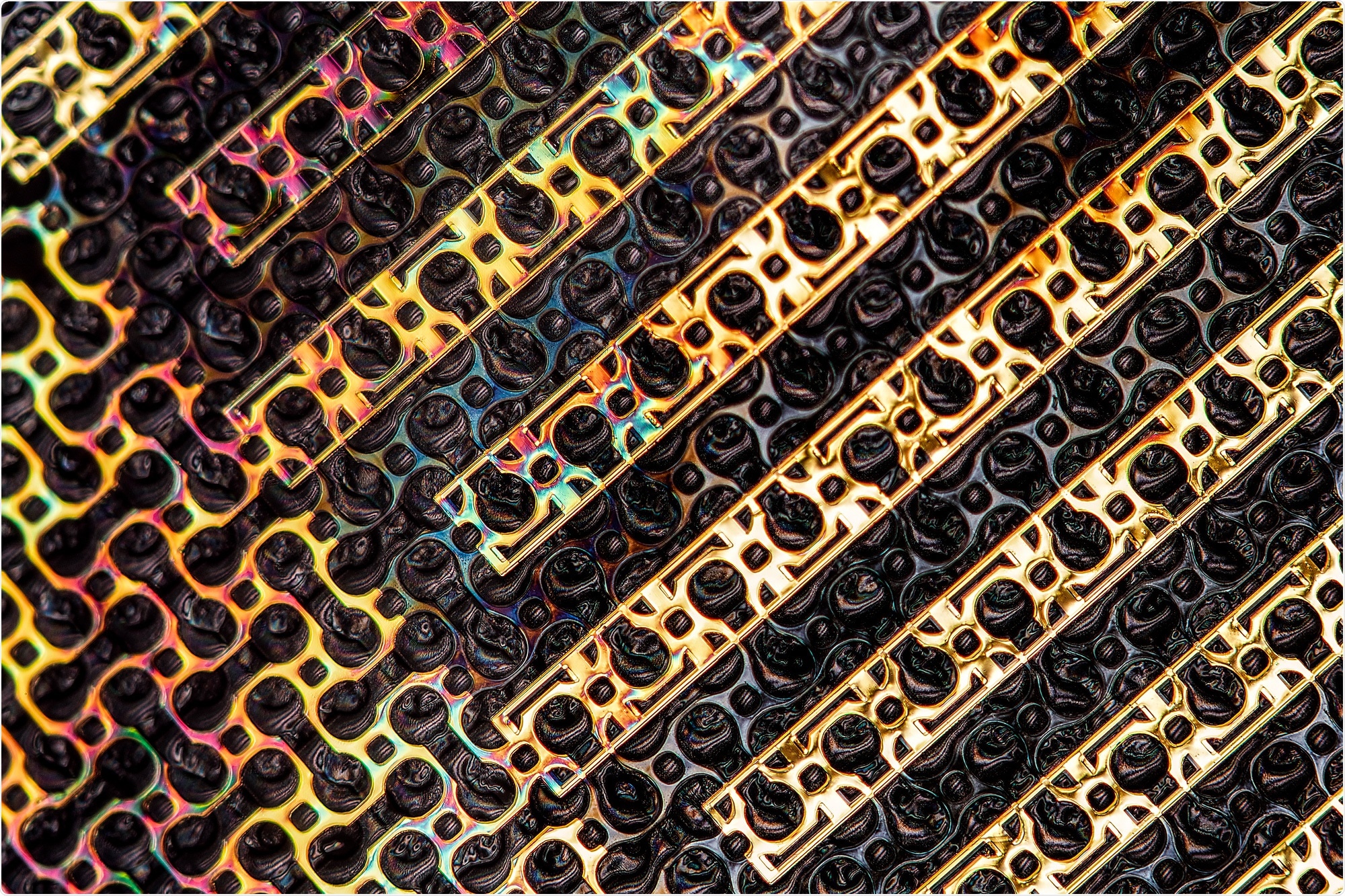Engineers have developed a type of “electronic skin” consisting of a sweat-proof, sensor-embedded sticky patch that monitors a person's health without malfunctioning or peeling away, even when a wearer is perspiring.

Electronic Skin. Image Credit: Courtesy of Jeehwan Kim, Hanwool Yeon, et al
Improving “electronic skin” by combining sweat-wicking and Japanese paper-cutting art design
Technological progress has provided numerous types of health-related devices from wristwatches sensing heartbeat and mobile applications tracking hormonal cycles to the wearable “electronic skin” sensors.
The latter consists of electronic patches of sensors placed on human skin and has been used to improve the strength, warmth, and durability of fabric as well as monitor the health conditions of individuals. Recent designs of “electronic skin” have been challenged and shown limited effectiveness when individuals sweat, which interferes with the sensors.
However, MIT engineers and researchers in South Korea have now adapted the “electronic skin” using artificial sweat ducts, similar to pores in human skin, that the researcher stretched through the electronic sensor’s ultrathin layers.
The pores perforate the patch in a kirigami-like pattern, similar to that of the Japanese paper-cutting art, and ensures that sweat can escape through the patch, preventing skin irritation and damage to embedded sensors. The sensors can now monitor a person's health over long periods thanks to the flexibility of the kirigami design paired with the material's ability to withstand sweat.
The new design was published today in Science Advances and is a key step towards long-lasting smart skins.
With this conformable, breathable skin patch, there won't be any sweat accumulation, wrong information, or detachment from the skin. We can provide wearable sensors that can do constant long-term monitoring." Jeehwan Kim, Associate Professor of Mechanical Engineering, MIT
Overcoming the sweaty challenge limiting electronic skin designs
The researchers recently gained the attention of cosmetics company Amorepacic, which was interested in developing thin wearable tape to continuously monitor skin changes. The company struck up a collaboration with Kim to fashion the group's flexible semiconducting films into something that could be worn over long periods of time.
To overcome the limitation of sweating, the research team diverged from the typical non-breathable polymer-based materials and gained inspiration from studying human sweat pores.
They found that the diameter of the average human pore measures about 100 microns and that pores are randomly distributed throughout the skin. The team then ran simulations to see how they might overlay and arrange artificial pores to avoid blocking actual pores in human skin.
The researchers then found they could increase the strength and flexibility of the artificial pore hole pattern by cutting thin channels between each hole, creating a pattern of repeating dumbbells. This pattern created a stretchable, kirigami-like effect when etched into a material, which could then be fabricated into an electronic skin from multiple functional layers.
The layers themselves are made of an ultrathin semiconductor-patterned array of sensors to monitor a range of factors. The design was then tested by sticking it to a volunteer's wrist and forehead who wore the tape continuously over a week. Throughout this period, the new e-skin reliably measured his temperature, hydration levels, UV exposure, and pulse, even during sweat-inducing activities, such as running on a treadmill for 30 minutes and consuming a spicy meal.
Throughout the entire week, results showed accurate results and monitoring without functional damage or sensor failure despite high levels of perspiration.
Understanding and extending the application and effectiveness of smart skin
The combination of sweat-wicking and improved flexibility was not possible in previous "e-skin" designs, and the incorporation of new elements will now improve the accuracy, durability, and effectiveness, of smart skin designs.
Importantly, the improved flexibility of the newly developed e-skin provided by the kirigami design also helps the patch conform to human skin as it stretches and bends. This is a key development towards implementing smart trackers on the human body that can track daily vitals or the progression of skin cancer and other conditions.
Kim's co-authors include lead author and MIT postdoc Hanwool Yeon, concludes: "Because the e-skin is very soft, it can be physically damaged," adding that, "We aim to improve the resilience of electronic skin."
Building on previous designs and adding newly inspired features will be key to developing a wearable, flexible, and resilient electronic skin that overcomes the sweat hurdle. This will provide many opportunities for medical research to study health-related changes in patients as well as other disciplines such as sports science to track physical movements, cardiovascular changes, or muscle strain, during strenuous exercise.